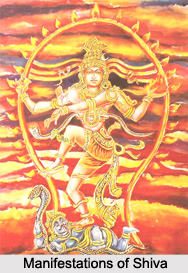 Shakta sect worship Shakti as the Supreme Being and as the dynamic aspect of Divinity. Sakta Sastra declares that the aim of a Shakta should be to identify oneself with Yantra, Mantra, Guru and Devi. The Shaktas also developed some practices which appear to be immoral to an observer who is impartial.
Shakta sect worship Shakti as the Supreme Being and as the dynamic aspect of Divinity. Sakta Sastra declares that the aim of a Shakta should be to identify oneself with Yantra, Mantra, Guru and Devi. The Shaktas also developed some practices which appear to be immoral to an observer who is impartial.
Jackals are incarnation of Sakti is a popular Shakta superstition. The mantras recited by the Shaktas are divided into three classes - Kadi, Hadi and Sadi. The Shakta sects are divided into two classes - Kalkula and Srikula. The tradition of Shaktism reached a high degree of development in West Bengal. The Sakta Tantras of this region regarded Shakti as the pivot round which the entire philosophy of Shakta revolves. Sakti is both manifested and unmanifested. Everything is her creation. The main object of a devotee of Shaktism is the realisation of the identity of Siva and Jiva.
The idea of Sakti as the supreme owes its origin to the matriarchal which prevailed in ancient India perhaps. It is found even now among some tribals also. India was a country where matriarchy was firmly rooted over a wide area. Some historians feel that female domination in Indian society was wider and deeper than in any other country in the world. However Sakta philosophy has become subtle and complex over the years. It recognises the thirty six tattvas which are: Siva, Sakti, Sadasiva, Isvara, Vidya, Maya, Avidya, Kala, Raga, Kala, Niyati, Jlva, Prakrti, Manas, Buddhi, Ahamkara, Panca-tanmatra, Paflca-bhuta, Dasendriya.
In the philosophy, Siva is the superlative principle. Though he is not dualistic yet he is coupled with inherent Shakti. Shakti is the manifestation of Siva. Jiva is a part of Siva but covered by kahcukas and mala. Shakti resides in the body as a coiling serpent. The doctrine of Sakti-parinamavada is also called Abhasavada. It is the manifestation of objects by the conscious principle. The Goddess is worshipped in three appearances - Sthuta, Suksma and Para. In the first form she is accessible to the eyes and hands of those who have mantrasiddhi. The second one is comprehended by the ears and speech of the sacred people. The third form is comprehended by the mind of holy worshippers.









